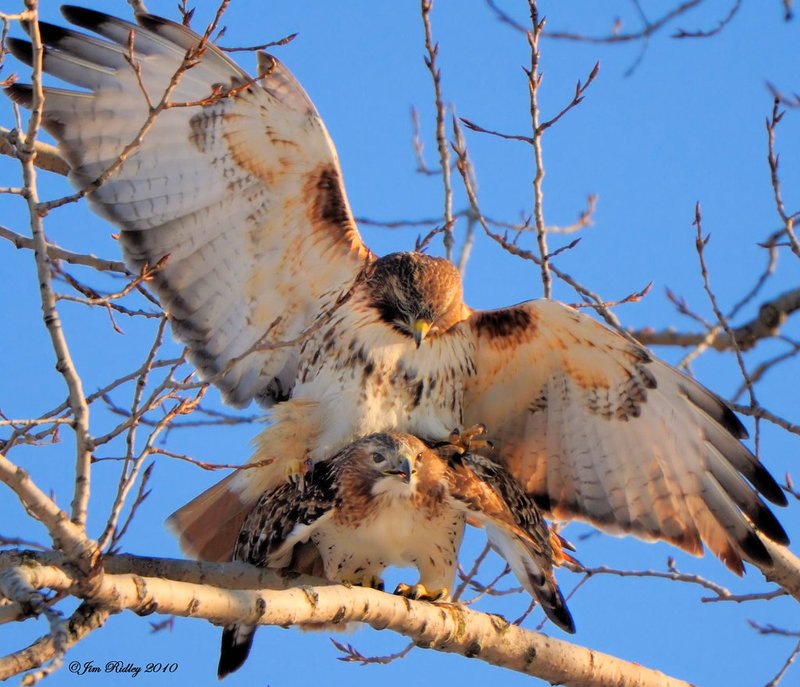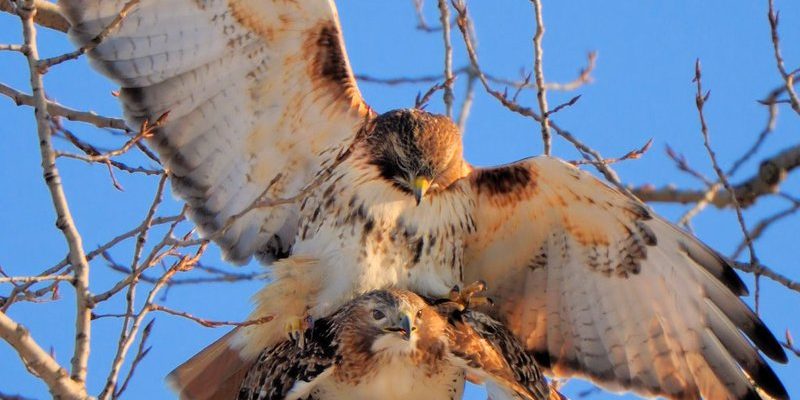
In this exploration of courtship and mating rituals of the hawk, we’ll delve into the different behaviors these birds exhibit as they try to win over a mate. We’ll touch on everything from their aerial displays to the importance of territory and nesting. So, if you’ve ever been curious about what really goes on in the lives of these impressive raptors during the mating season, grab a cup of coffee, get comfy, and let’s dive in!
The Aerial Dance: Courtship Displays
Hawks are known for their breathtaking aerial displays, especially during courtship. The male hawk often takes the lead, showcasing his agility and strength. Picture this: he spirals high into the sky, performing acrobatic turns and dives. It’s almost like he’s putting on a show, trying to impress a potential mate from above. This isn’t just for show, though. These spectacular maneuvers are key to attracting a female.
The grace and skill of these displays are crucial. Female hawks will evaluate their potential partners based on these performances. A male that can fly well shows he’s fit and capable, qualities that are essential for survival and raising young. During these courtship flights, you might even see pairs flying together, swooping and diving in sync. It’s a beautiful sight and a critical part of hawk courtship.
The timing of these displays is often tied to the breeding season, which varies depending on the species and location. For instance, Red-tailed Hawks typically begin their courtship in late winter. It’s during this time the skies become a stage for their elaborate performances, setting the scene for romance.
Vocalizations and Communication
Another vital piece of the courtship puzzle involves vocalizations. Hawks communicate through a variety of calls and signals, which play a significant role in attracting a mate and establishing territory. Each species has its own unique sounds, and the calls can convey different messages.
You might hear a male hawk calling out to a female, which often consists of sharp, piercing whistles or raspy sounds. These calls not only attract potential mates but also fortify their bond. When courting, you’ll notice males often call more frequently, ensuring their chosen partner is aware of their presence and interest.
Once a pair has formed, their communication continues throughout the mating season and beyond. They use these calls to stay in touch as they hunt, patrol their territory, or protect their young. This vocal interaction strengthens their partnership, essential for raising chicks together.
Territory and Nesting: Claiming a Home
Claiming territory is a critical aspect of hawk courtship. Before mating, a male must establish a territory that can support a family. This area should have ample hunting grounds and safe nesting sites. Imagine it as setting up a home for your future family—it’s all about finding the right place!
After a male successfully claims his territory, he often invites a female to explore it. They’ll survey the area together, checking out potential nesting sites—like tree hollows or cliff ledges. The female hawk assesses whether the territory is good enough, as it needs to provide food and safety for their future chicks.
Once they’ve settled on a location, construction of the nest begins. Hawks typically use sticks, leaves, and other materials to build a sturdy nest. This process can take weeks, and both partners often contribute to creating a solid home. A well-built nest is crucial, as it will house their eggs and eventually their young.
Mating Rituals: The Act of Bonding
When the time is right, hawks engage in mating rituals that can be both intricate and fascinating. After establishing territory and a nest, the actual mating process often involves a series of behaviors that strengthen the bond between the pair. You might see them performing synchronized flights or engaging in playful chasing, all part of the courtship dance.
During mating, the male will often feed the female, sharing prey to solidify their bond. This food exchange is a way for the male to demonstrate his ability to provide, an essential trait in the eyes of the female. These acts of generosity not only foster a connection but also set the tone for their partnership as they prepare for parenthood.
The mating itself is usually quite brief. However, these moments are crucial, as they are what will lead to the next generation of hawks. After mating, the pair will continue to keep close contact, reinforcing their bond as they await the arrival of eggs.
Incubation and Raising Chicks Together
Once mating occurs, the female lays eggs, usually ranging from one to five, depending on the species. The incubation period can last anywhere from 28 to 38 days. During this time, both parents play an essential role. The female typically does most of the incubating, but the male is responsible for bringing food and ensuring her needs are met.
It’s fascinating how the pair works as a team. While the female stays on the nest, the male hunts and brings back food, which is especially crucial as she needs to maintain her energy for both herself and the developing eggs. You might imagine him soaring high above, keenly searching for meals to bring back to her.
Once the chicks hatch, the responsibilities shift a bit. Both parents actively participate in feeding and protecting the young. They must work together to ward off potential threats, ensuring their chicks grow up healthy and safe. This cooperative parenting is a vital part of the hawk’s life cycle.
The Importance of Courtship Rituals in Hawk Survival
Courtship and mating rituals are not just about finding a partner—they are essential for the survival of the species. These behaviors ensure that hawks choose strong mates, capable of raising healthy offspring. The intricate dances, calls, and shared responsibilities serve to strengthen the bond between partners, fostering a supportive environment for raising young.
When hawks successfully establish a strong partnership, they increase their chances of producing healthy chicks. This is crucial, as many species face challenges like habitat loss, climate change, and food scarcity. By investing time and energy into these rituals, hawks contribute to their own survival and the continuity of their species.
As you can see, there’s so much more to hawk courtship than meets the eye. It’s a blend of art, strategy, and instinct, all woven together in the intricate tapestry of nature.
In conclusion, understanding the courtship and mating rituals of hawks gives us a glimpse into the complexity of avian life. From their breathtaking aerial displays to their cooperative parenting strategies, these raptors engage in a dance that’s vital for maintaining their species. Whether you’re a birdwatching enthusiast or just curious about nature, appreciating these rituals can enhance your understanding of the natural world. Next time you see a hawk soaring in the sky, you’ll have a deeper appreciation for the intricate and fascinating dance of courtship they engage in each season.

